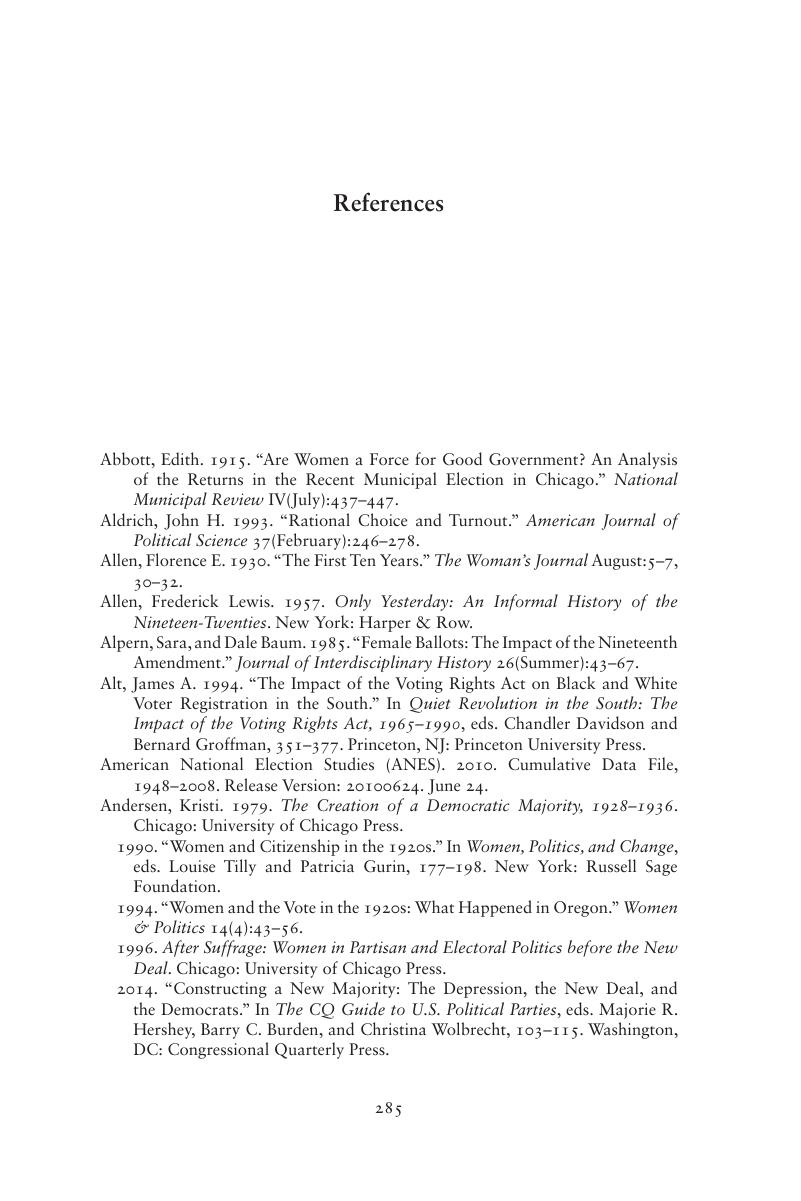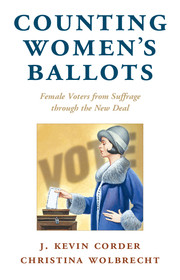Book contents
- Counting Women’s Ballots
- Cambridge Studies in Gender and Politics
- Counting Women’s Ballots
- Copyright page
- Contents
- Illustrations
- Figures
- Tables
- Acknowledgments
- Frontispiece
- 1 Counting Women’s Ballots
- 2 Before Suffrage
- 3 What We Already Know
- 4 Estimating Women’s Turnout and Vote Choice
- 5 Female Voters and the Republican Landslide of 1920
- 6 Female Voters, Republican Majorities, and the Progressive Surge in 1924
- 7 Female Voters and the “Rum and Religion” Election of 1928
- 8 Female Voters and the Emerging Democratic Majority, 1932–1936
- 9 Female Voters from Suffrage through the New Deal and Beyond
- References
- Index
- References
References
Published online by Cambridge University Press: 05 May 2016
- Counting Women’s Ballots
- Cambridge Studies in Gender and Politics
- Counting Women’s Ballots
- Copyright page
- Contents
- Illustrations
- Figures
- Tables
- Acknowledgments
- Frontispiece
- 1 Counting Women’s Ballots
- 2 Before Suffrage
- 3 What We Already Know
- 4 Estimating Women’s Turnout and Vote Choice
- 5 Female Voters and the Republican Landslide of 1920
- 6 Female Voters, Republican Majorities, and the Progressive Surge in 1924
- 7 Female Voters and the “Rum and Religion” Election of 1928
- 8 Female Voters and the Emerging Democratic Majority, 1932–1936
- 9 Female Voters from Suffrage through the New Deal and Beyond
- References
- Index
- References
Summary

Information
- Type
- Chapter
- Information
- Counting Women's BallotsFemale Voters from Suffrage through the New Deal, pp. 285 - 302Publisher: Cambridge University PressPrint publication year: 2016
